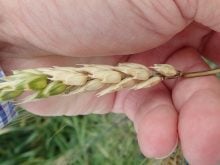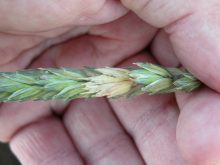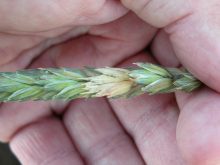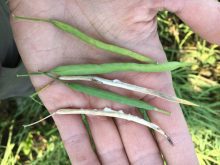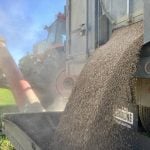Even the best wheat fungicides only offer suppression of fusarium head blight (FHB), so it’s crucial to follow label instructions closely to protect as much of your hard-won yield and quality as possible.
The application window for most FHB fungicides is as short as two to three days, so timing is tight. This coincides with the period when the florets are open. Prepare in advance to make an application between:
- When 75 per cent of the wheat heads on the main stem are fully emerged and;
- When 50 per cent of the heads on the main stem are in flower.
Read Also

Claas brings 1000 Series SP forage harvesters to Canada
In mid-August, Claas unveiled its new line of Jaguar forage harvesters at an event in Visalia, California, deep in the heart of that state’s dairy region.
Protecting the entire wheat head is key. Fusarium has the ability to infect grains that haven’t been sprayed directly, even if neighbouring grains have. Be sure to select the right spray nozzle, adjust it properly, use a generous water volume (I suggest 15 gal./ac.) and drive slowly for thorough coverage.
- More Grainews: Management practices can reduce fusarium
Should you be spraying for fusarium this year? If your cereal crops have suffered from a FHB outbreak in recent years and the weather is set to be warm, windy and wet or humid at flowering, a fusarium fungicide application is a smart idea.


